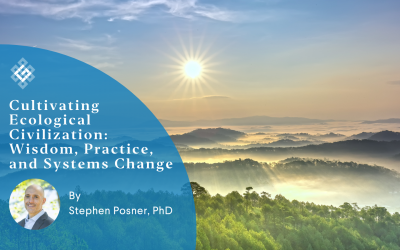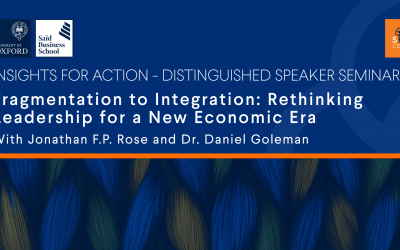By Rashid Hughes
“Choosing to care for our heartbreak is a sacred act of healing amid the chaos we are all navigating right now.” – Rashid Hughes
Heartbreak finds us all, there is no escaping it. No matter how righteously we try to live, wounding can show up in forms we recognize and forms we don’t. We inherit the pain of human relationships and other unintegrated trauma channeled through the violence of world systems, generational trauma, family breakups, fractured friendships, and the tender emotional imprints left in us from intimate partnerships.
While we are all vulnerable to heartbreak, it is also true that we have all said something we regretted, acted in a way that we feel disappointed about, or have caused others physical or emotional pain. There are moments in my life where I still find myself saying if only I would have had a little more awareness, I would have handled this or that differently.
And it hurts that I know I will not likely have the opportunity to reconcile with some people in this lifetime. Accepting this is how I remember that I too, like all of us, are both flawed and beautiful. I too need redemption. I am not exempt. And another hard truth to face is that we will likely wound again at some point in the future, generating more heartbreak. It sucks and this is the messy nature of being in this imperfectly precious human incarnation.
As a restorative justice facilitator, I’ve come to learn that heartbreak, pain, and conflict almost never happen in isolation. As we know, these wounds can emerge from larger systemic dynamics and interpersonal relationships. Yet, we can’t always get the reconciliation that we deeply desire.
Understanding this has allowed me to make peace with the reality of non-closure. And when embraced and sincerely contemplated, non-closure frees us as we navigate not getting the resolution we had hoped for with those we have wounded or experienced harm from.
Sometimes our most ethical and well-meaning attempts to process heartbreak communally doesn’t provide what we need either. I always tell people, healing doesn’t happen just because we’ve completed a successful accountability process or no longer have to see the person(s) we are at odds with.
Even when we feel satisfied with how a conversation or process turned out, the work doesn’t always end there. Heartbreak often lingers in deep domains of our hearts and can take residence in our bones. And once rooted in our tissues, our ability to dream and partake in new trusting relationships can be difficult. The healing I’m speaking of is not just about feeling the sorrow in our bodies, but also accessing the part of ourselves beyond the sorrow, where we remember a sense of wholeness that is unaltered.
So the contemplative in me asks: what is the cost of living with the residue of unprocessed heartbreak. From experience I know that there are times when the emotional pressures of talking through what went wrong with others and how everything happened is just too much.
What if we never want to have to feel our bodies shake again and again in front of the person we feel wronged by? And what if the people we’ve impacted don’t ever want to hear from us again? Then what? Is finding a sense of wholeness still possible? Is there a way out, or through?
I offer this practice on behalf of all of us who want a way out; all of us carrying heartbreak and seeking to tend to it. Buddhist Master Thich Nhat Hanh is famously known for saying that “the way out is in!”¹ That rings true to me. The question is: the way out is in what?
This practice responds to the impact of disrupted relationships by creating space for us to directly care for our internal wounds through our imagination, and call on our innate capacity to reshape our inner landscapes through the work of visualization.
To be clear, I’m not talking about the new age idea of manifesting personal fulfillment or external outcomes through individual willpower. I am also not knocking that practice, because I deeply feel that diverse approaches can resonate with various people’s needs at distinct points on their journey.
However, in this visualization work, rather than focusing our energy on having an external resolution, our intention is liberation, transforming our perceptions through contacting a deeper understanding of what we need. And from this, we honor the grief and pain within us and can begin to imagine new beginnings from within.
We let our senses guide us in knowing whether our work feels complete or needs deeper engagement rather than the conclusion of a process. In my book, this is a profound approach to ending cycles of violence.
Many of us cannot safely interact with those who have caused us suffering, or be in proximity to those we’ve impacted. The gift of this practice is that we aren’t required to directly interact with anyone in person, making it accessible to those of us who must protect ourselves from further harm or respect boundaries set by people we may have hurt.
Having the means to do this relational work on our own terms allows our nervous systems to feel safe enough to address what may otherwise be inaccessible in other contexts. This is liberatory work that grants us space to name and express difficult emotions like anger, fear, desires for retaliation, and shame, and to voice anything we haven’t been able to communicate, without worrying about how we will be received.
While this work happens within our own hearts and minds rather than through traditional face-to-face approaches, this is not about bypassing wrongdoing or allowing harmful behavior to go unaddressed. Neither am I suggesting that community processes should be abandoned. Sometimes, we may need both.
May we consider this practice as an additional resource in our vast healing potential amidst relational dynamics and ending cycles of wrongdoing rooted in untended heartbreak. May we let James Baldwin’s words ring true in us: “Your suffering does not isolate you. That your suffering is your bridge. That many people have suffered before you, many people are suffering around. And always will.”²
I see this practice as being in conversation with the countless communal approaches to conflict that so many practitioners have labored to make accessible to our communities over the years to ease the grip of suffering in and around us. May this practice allow us to reclaim agency in our own liberation while understanding that healing work is profoundly relational. As Black folks often say, we need all the things.
If you’ve ever experienced heartbreak…especially in relationships…you may find the following guided meditation supportive.
Rashid Hughes (he/him) is a writer, meditation teacher, yoga instructor and a restorative justice facilitator. He is the co-founder of the Heart Refuge Mindfulness Community, a Mindfulness Community in Washington, DC that is dedicated to inspiring Black, Indigenous, and People of Color to live with love and courage. Rashid is an Affiliate Teacher for the Insight Meditation Community of Washington DC, and he is also a teacher of the Presence Collective. He holds a Master of Divinity Degree from the Howard University School of Divinity.
Footnotes:
¹Thích Nhất Hạnh, The Way Out Is In: The Zen Calligraphy of Thich Nhat Hanh (Berkeley, CA: Parallax Press, September 7, 2015)
² James Baldwin, interview with Nikki Giovanni, Soul, television program, 1971.




